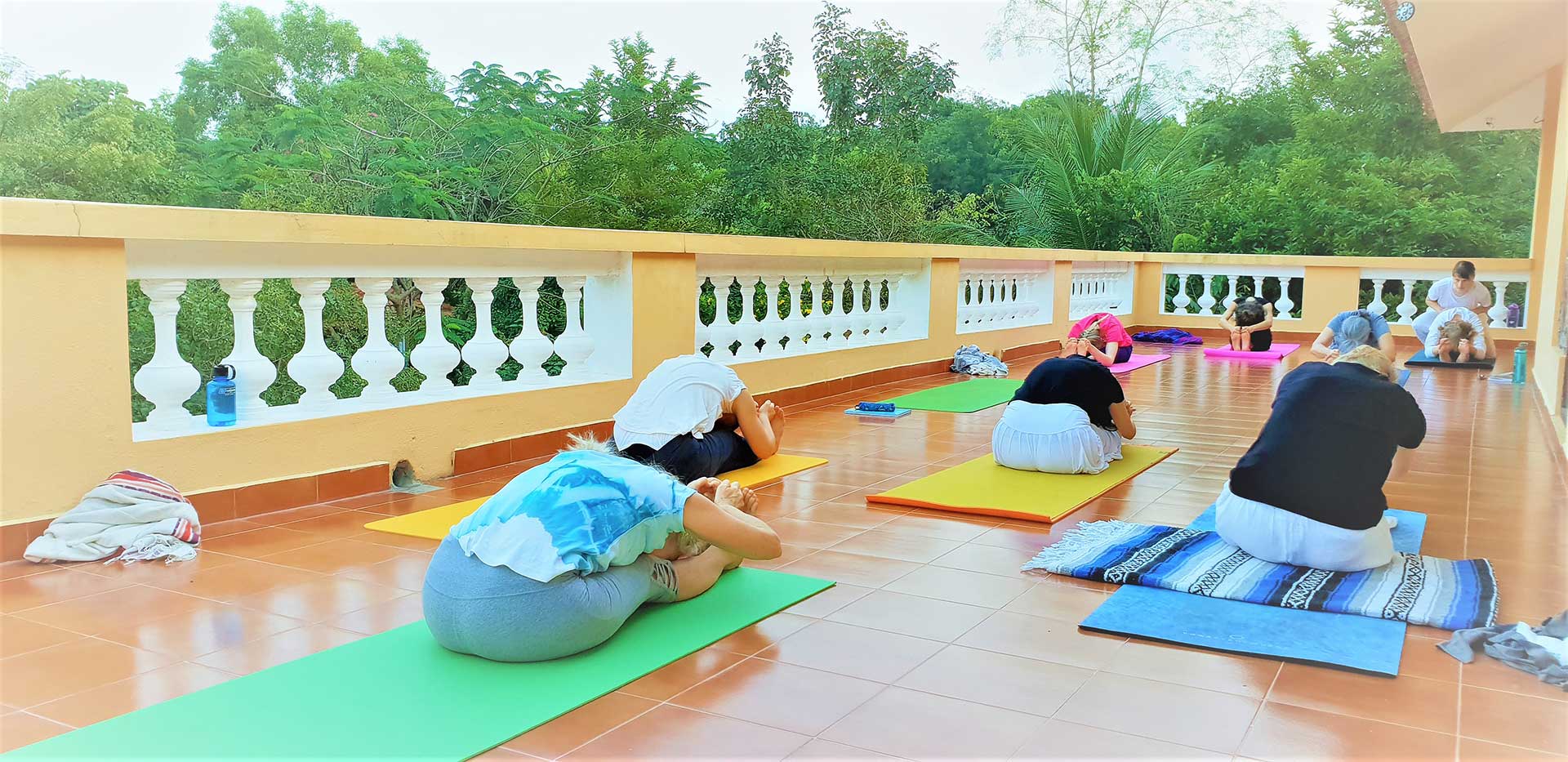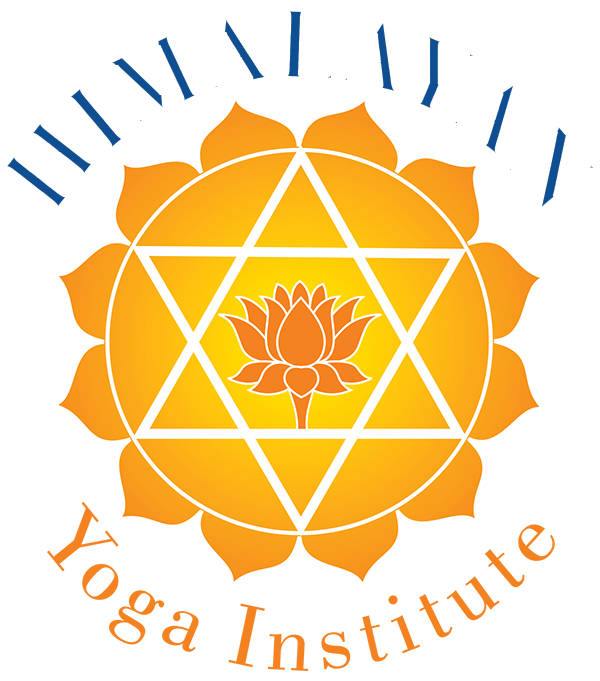
How Can I Benefit
 Yoga Retreat
Yoga Retreat
Yoga, while it can be practised at home as part of your regular daily life, becomes a powerful tool for rapid transformation when in a retreat. That’s when you can immerse yourself in meditation and study and deepen your yoga practice. It helps you to get slightly closer to the answer of what life is all about. And with that newly found strength gained during the retreat you will be able to approach your practice with new depth and enthusiasm once you are back home. The health benefits of yoga are innumerable and so are the benefits for the mental, emotional and spiritual self.
The retreat will host a small number of participants which allows for lots of personal attention. The central theme of the retreat is Yoga practice. Yoga offers a practical and scientific methodology for the all-round development of the person. We will practice a variety of yogic disciplines which when practised combined, work synergistically to enhance our physical, mental, emotional and spiritual faculties and well-being. The benefits of yoga are numerous:
Asanas, or yoga postures, act as a lubricating routine to the joints, muscles, ligaments and other parts of the body, increasing circulation and flexibility.
Yoga is the only exercise system known today, that massages the internal organs and endocrine glands, thus balancing the hormone secretion, which is responsible for our emotional state. An example would be the thyroid gland: the over-secretion of the thyroid and parathyroid glands causes insomnia, emaciation and irritability; under-secretion on the other hand results in the opposite: lethargy (abnormal need for sleep), obesity and sluggishness.
In order to balance the hormone secretion of the glands a combination of asanas are prescribed.
Asanas tone the muscles, develop flexibility, improve posture and spinal alignment, massage the inner organs and balance the hormone secretion.
Sheer muscle development does not necessarily mean a healthy body and forceful movement, as in ordinary physical exercise, builds up large quantities of lactic acid in the muscle fibres, causing fatigue. In yoga this is neutralised by deep, slow and regulated breathing, providing a steady intake of oxygen. Health is a state wherein all organs function perfectly under the intelligent control of the mind.
Yoga postures initially focus on improving body flexibility (your body is as young as it is flexible). They focus on the health of the spine, its strength and flexibility. The spinal column houses the all-important nervous system (the telegraphic system of the body).
By maintaining the spine’s flexibility and strength through exercise, circulation is increased and the nerves are ensured their supply of nutrients and oxygen. Asanas work on the internal machinery of the body, the glands and organs as well as the muscles. They affect the deeper and more subtle parts of the body. The internal organs receive massage and stimulation through the various movements of the asanas and are toned into more efficient functioning. Hand in hand with the practise of asanas we practise deep breathing and concentration of mind.
The yogic system of exercise can be compared to no other in its complete overhaul of the entire being. Performed slowly and consciously the asanas go far beyond mere physical benefits becoming mental exercises in concentration.
 Learning How to Breathe
Learning How to Breathe
Yoga uses diaphragmatic breathing, which is also called the “full yogic breath”. Yogic breathing exercises are called pranayama, which means controlling the prana. Prana is the subtle vital energy that keeps us alive. The grossest manifestation of prana in the human body is the motion of the lungs. This motion of the lungs acts like the flywheel that sets the other forces of the body in motion. The subtlest expression of prana is thought. Thus breath and thought are connected. Rapid breathing prevents clear thinking, whereas slow and deep breathing allows for deep and clear thinking. When we concentrate and consciously regulate the breathing we are able to store a greater amount of prana. People with a great amount of prana radiate vitality and strength.
 Learning How to Relax
Learning How to Relax
When the mind and body are constantly overworked, their natural efficiency diminishes. Modern social life, food, work and even entertainment make it difficult for people to relax. Relaxation is nature’s way of recharging, it cools down the body as does the radiator of the car. Even while trying to rest, the average person expends a lot of physical and mental energy through tension. This causes restless sleep or even insomnia. Much of the body’s energy is wasted uselessly. More of our energy is spent in keeping the muscles in continual readiness for work than in actual useful work done. In order to regulate and balance the work of the body and mind, it is best to learn to economise the energy produced by the body. This may be done by learning to relax. In order to achieve perfect relaxation, three methods are used by yogis: physical, mental and spiritual relaxation.
 Meditation and Positive Thinking
Meditation and Positive Thinking
Meditation works profound changes in the psyche. By curbing and stilling the oscillations of the mind, meditation brings mental peace. On the physical level, meditation helps to prolong the anabolic process of growth and repair, and to reduce the catabolic or decaying process. This is because of the innate receptivity of the body cells. Each of our body cells is governed by the instinctive subconscious mind. When the thoughts and desires pour into the body, the cells are activated. It has been scientifically proven that positive thoughts affect the cells in a positive way. As meditation brings about a prolonged positive state of mind, it rejuvenates body cells and retards decay, or ageing. Stilling the mind helps to resolve fears and anxiety. It thus helps to find peace, contentment and inner happiness.
The side effects of meditation are numerous: we are able to focus and concentrate at all times, develop will power and mental clarity – which allows for sustained deep thinking and problem-solving.
 Yoga Nidra
Yoga Nidra
Yoga Nidra which is derived from the teachings of the Tantras, is a powerful technique to consciously relax. In Yoga Nidra, sleep is not regarded as relaxation. Yoga nidra could be termed as “dynamic sleep”. It is a systematic method of inducing complete physical, mental and emotional relaxation. The term is derived from Sanskrit: yoga means union or one-pointed awareness and nidra means sleep.
During the practice of yoga nidra one appears to be asleep, but the consciousness is functioning at a deeper level of awareness. Therefore yoga nidra is often referred to as psychic sleep or deep relaxation with inner awareness. In this threshold state between sleep and wakefulness, contact with the subconscious and unconscious dimensions occurs spontaneously.
In yoga nidra, the state of relaxation is reached by turning inwards, away from outer experiences. If the consciousness can be separated from external awareness and from sleep, it becomes very powerful and can be applied in many ways, for example to develop memory, increase knowledge and creativity, or transform one’s nature.
One of the eight limbs (Ashtanga) of Patanjali’s Raja Yoga is Pratyahara (withdrawal of the senses) which is a technique to dissociate the mind and mental awareness from the sensory channels. Yoga Nidra is one aspect of pratyahara which prepares us for the higher states of concentration and Samadhi.
 Lifestyle Coaching (optional)
Lifestyle Coaching (optional)
Personalised sessions in lifestyle coaching will be offered to participants upon request. This will include:
- Analysis of one’s present lifestyle choices, identifying areas which require change and improvement
- Developing a personally tailored action plan with the option for a weekly follow up with the coach over a certain period of time (3-6 months)
- Personalised exercise routine and dietary suggestions
- Prioritising and goal setting
 Dance workshop (optional)
Dance workshop (optional)
Discussion on the philosophy of Indian Arts; Learning the basics of Indian Classical dance, including specialised hand gestures (mudras), dance steps, mimic dance. We will learn short dance sequences and enact a story.
No other technique or dance form has given so much attention to gesture as has Indian classical dance. Spiritually, psychologically and visually, each gesture is thought out to the minutest detail. Bharata Natyam is one of the six styles of Indian Classical Dance. It originated in the temple art of South India. It was brought to the secular stage in the 20th century and has gained great popularity all over the world in the last few decades. It involves both abstract and mimic dance. The abstract or “pure” dance is characterized by clarity and symmetrical precision. The rhythmic variations and intricate dance patterns are ornamented with graceful poses and hand gestures. The mimic dance uses a highly stylized gesture language, while using the hands and facial expression as important tools in expressing subtle emotions.
You will learn:
- Yoga postures and sequences preparing the body for dance
- Yoga asanas cooling the body after aerobic exercise (dance)
- Hand gestures used in Bharata Natyam
- Specific movements of the eyes, neck, head, shoulders, arms
- Dance poses
- Adavus: the single steps and sequences used to create choreographic patterns
- Mimic dance, the basics
- A mimic dance piece
- Abstract dance
- The philosophy that lies at the root of the Indian arts
 I've never tried yoga before
I've never tried yoga before
Doesn't matter! The Yoga Vacation is an excellent way to start. No previous experience is required. The program provides instruction for everyone from beginners to advanced practitioners.
A good way to get introduced to a yoga vacation is to attend one of our weekend yoga UK detox retreats. It will give you a taste of how wonderful you will feel if you double or triple the time you spend at a yoga retreat centre.
